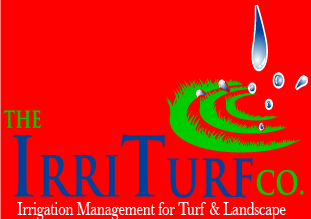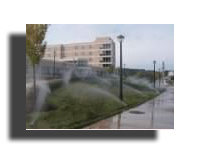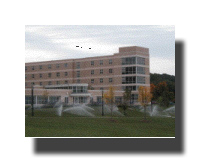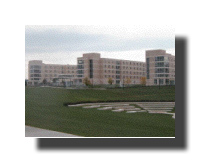

 |
||||||||
|
The IrriTurf co , Inc. has been recognized by Smith Turf & Irrigation with 3 separate honors for the state of Virginia. Smith Turf & Irrigation, an industry leader in the distribution and support of quality irrigation products, is based in Charlotte, NC.
|
||||||||
|
|
||||||||
James Madison University – East Campusthe IrriTurf co. was approached by James M |
||||||||
Consolidating Controllers
the IrriTurf co. and JMU came up with an innovative answer. The university’s Building Automated Systems (BAS) utilize Johnson Control Panels and we applied this existing resource to our irrigation system valves; turning them on and off according to the parameters of our watering schedule. The university computer programmers created an irrigation systems layer to interface with the individual Johnson control panels. the IrriTurf co. wired the automated valves to each of the control panels. This allows automatic application of the watering schedule, or manual operation of the entire irrigation system from a central location. The Landscape and Grounds department has a terminal set up in their shop to  allow for an override in the case of rain, Gubernatorial Executive Ordinances due to drought or any such emergencies. All existing controllers, almost anywhere on campus, can be retrofitted to a control panel and implemented into the new irrigation layer and programming. allow for an override in the case of rain, Gubernatorial Executive Ordinances due to drought or any such emergencies. All existing controllers, almost anywhere on campus, can be retrofitted to a control panel and implemented into the new irrigation layer and programming. |
||||||||
Pump Station
- makes a variable flow pump out of a constant speed pump - automatically chokes back the output of a pump to match the users water requirements.
The CSV is completely mechanical requiring no electronics. This pump station features soft start and soft stop, mechanical on/off pressure switch, mechanical low discharge pressure switch, overload shutdown, individual motor phase loss and low voltage protection. The pump station is capable of providing a 50psi boost @ 200 gpm. Without any digging, the 2” service line and meter can be upgraded to 3” thereby enabling 200 gpm to be delivered to the system.
|
||||||||
Scheduling and Programming when the required water consumption exceeds the pump stations allowable limitations. The spreadsheet begins with the sources limitations (meter, backflow, and pump station) and applies the appropriate number of like zones/valves (spray with spray, full sun with full sun, etc.) to add up to run the maximum valves at once. With this in place we easily have designed a water schedule that stays within the parameters set by the source and watering window. More important is that the watering schedule is easily conveyed to JMU and protected from a programmer’s mistake or lack of information. when the required water consumption exceeds the pump stations allowable limitations. The spreadsheet begins with the sources limitations (meter, backflow, and pump station) and applies the appropriate number of like zones/valves (spray with spray, full sun with full sun, etc.) to add up to run the maximum valves at once. With this in place we easily have designed a water schedule that stays within the parameters set by the source and watering window. More important is that the watering schedule is easily conveyed to JMU and protected from a programmer’s mistake or lack of information. All valves and wiring are clearly identified and traced back to the exact Johnson Control Panel that operates it. The schedule codes identify which valves run together and at what times. The IrriTurf co. gave JMU a projected water usage for each month and was able to project their water costs, and savings. This was important in the bidding process because it allowed JMU to see the savings that this irrigation system offers them.  We believe this project represented our ability to communicate with JMU, identifying and adapting to their needs throughout the design and installation processes. Though this project is completed, we have developed an ongoing relationship with JMU. We continue to work on more projects, and expect the same successful results. We believe this project represented our ability to communicate with JMU, identifying and adapting to their needs throughout the design and installation processes. Though this project is completed, we have developed an ongoing relationship with JMU. We continue to work on more projects, and expect the same successful results. |
||||||||